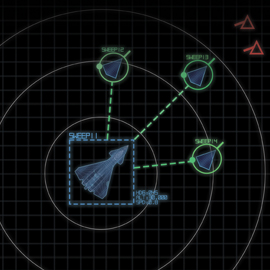The Air Force wants its secret Long Range Strike bomber to be only part of a “family of systems” that will enhance its ability to hold any target at risk — but don’t expect to meet the relatives anytime soon.
“It’s still a family of systems. I don’t know when we’ll be able to talk more about what that is, even in a more broader sense than we are now,” Air Force Undersecretary Eric Fanning told reporters.
Nearly everything about “Long Range Strike” is classified. The overall goal, service officials have said, is to develop a portfolio that will work against an advanced adversary taking special efforts to keep American units as far away as possible. So in addition to the bomber the Air Force acknowledges it’s building, the family could include everything from new standoff weapons to new sensors, communications networks and cyber-weapons.
“If you talked with the right Air Staff people, they’d say ‘We want capabilities that can create the right effects, deep in enemy airspace, in all kinds of threat environments,” said Mark Gunzinger, a former deputy assistant secretary of defense who is now a senior fellow with the Center for Strategic and Budgetary Assessments.
Boeing and Lockheed Martin have announced they plan to bid on the bomber as a joint team. Northrop Grumman, which built the Air Force’s fleet of B-2 Spirit bombers, also is expected to make an attempt, although it hasn’t officially confirmed that. Service officials could issue a request for information about the vendors’ concepts as early as this fall.
But even though much of the attention in the defense world is focused specifically on the bomber, Gunzinger said he believes the “family” concept is also still in the forefront of the Air Force’s mind as it looks ahead to the 2020s, when it hopes its new warplane will fly.
Gunzinger and former Air Force Lt. Gen. Dave Deptula authored a report this month emphasizing the importance of what Gunzinger called a “reconnaissance strike complex,” which integrates not only Air Force bombers but drones, ships and submarines.
“The overarching point is that when you look at a family of systems, at deep strike, at the reconnaissance strike complex, you must think joint,” Gunzinger said.
Some of the hardware that commanders may need is already in the fleet today, he said, including Virginia-class submarines. Tomorrow’s subs will sail with new “Virginia Payload Tubes,” giving them the ability to carry more missiles or other interchangeable equipment, including unmanned vehicles.
It means rethinking the strategy involved with fielding warships and aircraft, which Pentagon planners have undertaken with their “Air-Sea Battle” concept, and it also means changing the services’ longstanding beliefs about what their units do. In the case of the new bomber, Gunzinger said he thought it could be as much a reconnaissance aircraft as a traditional delivery truck for bombs, one reason the Air Force was said to want it to be optionally manned.
Virtually all of the details known about the program — such as they are — are about the bomber, which service officials want to begin replacing their decades-old fleet of Cold War-era aircraft.
The Air Force wants to keep production costs beneath a ceiling of about $550 million per aircraft. The bomber will likely enter service as a conventional strike aircraft only, then add the ability to handle nuclear weapons later. It must rely on mostly existing technology and probably will not be supersonic.
Otherwise, LRS-B is classified. Those who need to know about it know, Air Force Chief of Staff Gen. Welsh has said. Those who don’t, don’t. Congressional aides say the House and Senate Armed Services Committees are kept “fully briefed” about the program, and there is “no issue” with oversight.
The biggest priority today, Fanning told reporters, is to control costs on LRS-B from the outset so that the Air Force can wind up with the fleet of bombers it needs at a price it can afford.
“The competition that’s in place right now is, in my view, pretty substantial,” he said. “Those that are teeing up to bid on the next-generation bomber, Long Range Strike Bomber, are investing a lot of money in this, a lot of effort, a lot of capital. So we take the competition very seriously because our desire to keep that $550 million production cost number is driving a lot of tradeoffs, so competition will help us keep to that number and get the requirements, get the capability out of that bomber that we want.”



























